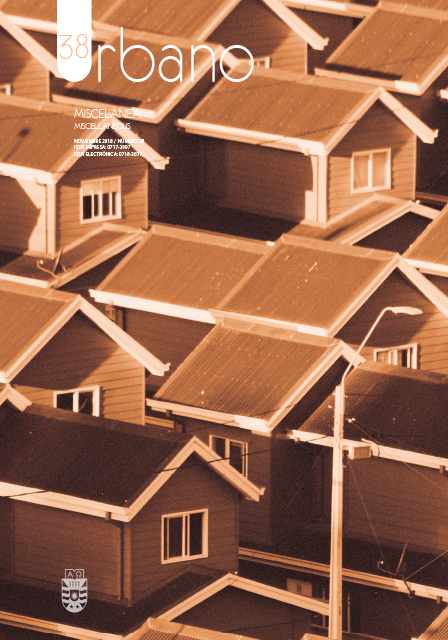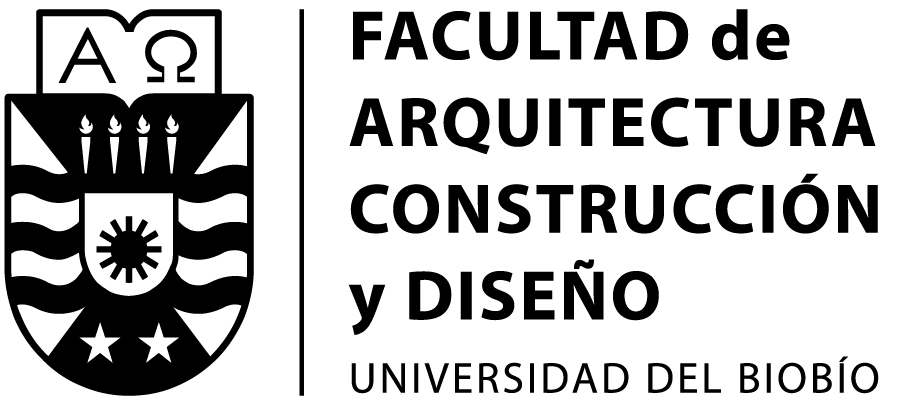Situación actual y cambios recientes en los índices de vegetación (vis) en ciudades forestadas con climas secos. Caso área metropolitana de Mendoza, Argentina
DOI:
https://doi.org/10.22320/07183607.2018.21.38.02Palabras clave:
variación de la vegetación, SIG, teledetección, infraestructura verde urbanaResumen
Las ciudades insertas en tierras secas se han adaptado a la escasez de recursos y a la complejidad antrópico-cultural del hábitat. La vegetación urbana es un elemento clave para la mitigación de los cambios climáticos y la resiliencia frente a la compleja problemática energético-ambiental relacionada con las morfologías urbano-edilicias. El objetivo del presente trabajo es estudiar las condiciones actuales y los cambios recientes en la vegetación urbana, analizando la variabilidad temporal y espacial del índice de vegetación de diferencia normalizada (NDVI) y el índice de vegetación ajustado al suelo (SAVI) en el área metropolitana de Mendoza (AMM). Metodológicamente, se determinaron los índices en sistemas de información geográfica (SIG) del análisis de imágenes satelitales Landsat 5 (1986-2011) y Landsat 8 (2013-2017) y se realizó un análisis estadístico de estimación de tendencias y correlaciones. Los resultados obtenidos indican una pendiente general descendente en los valores medios NDVI y SAVI en el período 1986-2011. Maipú y Guaymallén muestran las pendientes descendentes mayores, con prioridad de intervención en la toma de decisiones para resolver la tendencia, seguidos por Luján de Cuyo y Las Heras. Capital es el departamento con menor pendiente de descenso. En el período 2013-2017 se determinaron correlaciones positivas muy altas entre departamentos. Godoy Cruz es el departamento prioritario a intervenir en la estrategia de aumento en los índices de vegetación, considerando los resultados por departamento y por manzanas urbanas, para la totalidad de los años de estudio. Finalmente, los espacios verdes públicos del AMM prioritarios a intervenir se ubican en Las Heras para las estrategias de aumento en los valores de índices de vegetación y de aumento de superficie de espacios verdes públicos.
Descargas
Citas
BASTIN,Jean-François;BERRAHMOUNI,Nora;GRAINGER,Alan;MANIATIS,Danae; MOLLICONE, Danilo; MOORE, Rebecca; PATRIARCA, Chiara; PICARD, Nicolas; SPARROW, Ben; ABRAHAM, Elena; ALOUI, Kamel; ATESOGLU, Ayhan; ATTORE, Fabio; BASSÜLLÜ, Çağlar; BEY, Adia; GARZUGLIA, Monica; GARCÍA- MONTERO, Luis G.; GROOT, Nikée; GUERIN, Greg; LAESTADIUS, Lars; LOWE, Andrew J.; MAMANE, Bako; MARCHI, Giulio; PATTERSON, Paul; REZENDE, Marcelo; RICCI, Stefano; SALCEDO, Ignacio; SANCHEZ-PAUS DIAZ, Alfonso; STOLLE, Fred; SURAPPAEVA, Venera y CASTRO, Rene. The extent of forest in dryland biomes. Science, 2017, vol. 356, no 6338, pp. 635–638.
CHUVIECO, Emilio. Teledetección ambiental: la observación de la Tierra desde el espacio. Barcelona: Ariel, 2002.
COMISIÓN NACIONAL DE ACTIVIDADES ESPACIALES (CONAE). Índices espectrales derivados de imágenes satelitales Landsat 8 Sensor OLI. Guía de Usuario [en línea]. [Consultado 7 septiembre 2016]. Disponible en: https://catalogos. conae.gov.ar/landsat8/Docs/IndicesEspectralesDerivadosDeLandsat8.pdf.
DAVIS, Amelie; JUNG, Jinha; PIJANOWSKI, Bryan y MINOR, Emily. Combined vegetation volume and “greenness” affect urban air temperatura. Applied Geography, 2016, vol. 71, pp. 106-114.
DIRECCIÓN GENERAL DE CATASTRO [en línea]. [Consultado 1 junio 2010]. Disponible en: https://www.atm.mendoza.gov.ar/portalatm/zoneTop/catastro/ catastro.jsp
EARTH OBSERVATION GROUP (EOG). NOAA NATIONAL GEOPHYSICAL DATA CENTER [en línea]. [Consultado 15 enero 2017]. Disponible en: https://ngdc. noaa.gov/eog/night_sat/nightsat.html
FAN, Chao; MYINT, Soe W.; KAPLAN, Shai; MIDDEL, Ariane; ZHENG, Baojuan; RAHMAN, Atiqur; HUANG, Huei-Ping; BRAZEL, Anthony y BLUMBERG, Dan G. Understanding the impact of urbanization on surface urban heat islands—A longitudinal analysis of the oasis effect in subtropical desert cities. Remote Sensing, 2017, vol. 9, no 7, p. 672.
GANDHI, Meera; PARTHIBAN, S. y THUMMALU, C. Ndvi: Vegetation change detection using remote sensing and gis – A case study of Vellore District. Procedia Computer Science, 2015, vol. 57, pp. 1199–1210.
GÄRTNER, Philipp. European capital greenness evaluation [en línea]. [Consultado 22 agosto 2017]. Disponible en: https://philippgaertner.github.io/2017/10/ european-capital-greenness-evaluation/
GOOGLE MAPS [en línea]. [Consultado 12 noviembre 2016]. Disponible en: https://www.google.com/maps/
HUETE, Alfredo y LIU, Hongqing. An error and sensitivity analysis of the atmospheric- and soil-correcting variants of the NDVI for the MODIS-EOS. IEEE Transactions on Geoscience and Remote Sensing, 1994, vol. 32, pp. 897-905.
HUETE, Alfredo; JACKSON, Ray y POST, Donald. Spectral response of a plant canopy with different soil backgrounds. Remote Sensing of Environment, 1985, vol. 17, pp. 37-53.
INSTITUTO GEOGRÁFICO NACIONAL DE LA REPÚBLICA ARGENTINA (IGM) [en línea]. [Consultado 23 enero 2017]. Disponible en: http://www.ign.gob.ar/
INTERGOVERNMENTAL PANEL ON CLIMATE CHANGE (IPCC). Climate Change 2007: Synthesis Report. Contribution of Working Groups I, II and III to the Fourth Assessment Report of the Intergovernmental Panel on Climate Change. Ginebra: IPCC, 2008.
KASPERSEN, Per Skougaard; FENSHOLT, Rasmus y DREWS, Martin. Using Landsat vegetation indices to estimate impervious surface fractions for European Cities. Remote Sensing, 2015, vol. 7, pp. 8224-8249.
KYBA, Christopher; KUESTER, Theres; SÁNCHEZ DE MIGUEL, Alejandro; BAUGH, Kimberly; JECHOW, Andreas, HÖLKER, Franz, BENNIE, Jonathan, ELVIDGE, Christopher; GASTON, Kevin y GUANTER, Luis. Artificially lit surface of Earth at night increasing in radiance and extent. Science Advances, 2017, vol. 3, n° 11, p. e1701528.
LANDSAT SCIENSE [en línea]. [Consultado 14 noviembre 2016]. Disponible en:https://landsat.gsfc.nasa.gov.
LIGHTPOLLUTIONMAP [en línea]. [Consultado 14 noviembre 2016]. Disponible en: https://www.lightpollutionmap.info/
MCPHERSON, E. Gregory; XIAOB, Qingfu; VAN DOORNC, Natalie S.; DE GOEDED, John; BJORKMAND, Jacquelyn; HOLLANDERD, Allan; BOYNTOND, Ryan; QUINND, James y THORNE, James. The structure, function and value of urban forests in California communities. Urban Forestry & Urban Greening, 2017, vol. 28, pp. 43–53.
MILES, Lera; NEWTON, Adrian; DEFRIES, Ruth; RAVILIOUS, Corinna; MAY, Ian; BLYTH, Simon; KAPOS, Valerie y GORDON, James. A global overview of the conservation status of tropical dry forests. Journal of Biogeography, 2006, vol. 33, pp. 491-505.
MONTEITH, John. Principles of Environmental Physics. Londres: Edward Arnold, 1973.
MORÁN, M. Susan; JACKSON, Ray; SLATER, Philip y TEILLET, Philippe. Evaluation of simplied procedures for retrieval of land surface reflectance factors from satellite sensor output. Remote Sensing of Environment, 1992, vol. 41, pp. 169-184.
MUNICIPALIDAD DE CAPITAL [en línea]. [Consultado 4 noviembre 2010]. Disponible en: http://www.ciudaddemendoza.gov.ar
PEARLMUTTER, David; BITAN, Arieh y BERLINER, Pedro. Microclimatic analysis of “compact” urban canyons in arid zone. Atmospheric Environment, 1999, vol. 33, pp. 4143-4150.
RAMSEY R. Douglas; FALCONER, Allan y JENSEN, John Robert. The relationship between NOAAAVHRR NDVI and ecoregions in Utah. Remote Sensing of Environment, 1995, vol. 53, pp.188-198.
ROUSE, John; HAAS, R.; DEERING, D., SCHELL, J. y HARLAN, J. Monitoring the vernal advancement and retrogradation (Green wave effect) of natural vegetation, Final Report. Texas: A & M Universiy, 1974.
RUIZ DURÁN, M. Eva; OROZCO HERNÁNDEZ, M. Estela; GRANADOS RAMÍREZ, Rebeca y ÁLVAREZ ARTEAGA, Gustavo. Cambio de uso de suelo e índice de vegetación de diferencia normalizada (NDVI), Subcuenca del río Salado, México. Geografía y Sistemas de Información Geográfica, 2017, vol. 9, pp.39-50.
SALINAS-ZAVALA, César; MARTÍNEZ-RINCÓN, Raúl y MORALES-ZÁRATE, M. Verónica. Tendencia en el siglo XXI del Índice de Diferencias Normalizadas de Vegetación (NDVI) en la parte sur de la península de Baja California. Investigaciones Geográficas, 2017, vol. 94.
SANTAMOURIS, Mattheos; HADDAD, Shamila; SALIARI, Maria; VASILAKOPOULOU, Konstantina; SYNNEFA, Afroditi; PAOLINI, Riccardo; ULPIANI, Giulia; GARSHHASBI, Samira y FIORITO, Francesco. On the energy impact of urban heat island in Sydney. Climate and energy potential of mitigation technologies. Energy and Buildings, 2018, vol. 166, pp. 154-164.
SANTANA-RODRÍGUEZ, Luis; ESCOBAR-JARAMILLO, Luis y CAPOTE, Paolo. Estimación de un índice de calidad ambiental urbano, a partir de imágenes de satélite. Revista de Geografía Norte Grande, 2010, vol. 45, pp. 77-95.
SHAHABI, Himan; AHMAD, Baharin; MOKHTARI, Mohammad y ZADEH, Mohsen. Detection of urban irregular development and green space destruction using normalized difference vegetation index (NDVI), principal component analysis (PCA) and post classification methods: A case study of Saqqez city. International Journal of the Physical Sciences, 2012, vol. 7, pp. 2587-2595.
UNITED STATES GEOLOGICAL SURVEY (USGS), EARTHEXPLORER [en línea]. [Consultado 20 septiembre 2016]. Disponible en: https://earthexplorer.usgs. gov/
VIRGINIA, Ross y WALL, Diana. Ecosystem function, Principles of. Encyclopedia of Biodiversity, 2001, vol. 2, pp. 345–352.
ZHANG, Hankui y ROY, David. Landsat 5 Thematic Mapper reflectance and NDVI 27-year time series inconsistencies due to satellite orbit change. Remote Sensing of Environment, 2016, vol. 186, pp. 217–233.
Publicado
Cómo citar
Número
Sección
Licencia
El contenido de los artículos y reseñas que se publican en cada número de Urbano, es responsabilidad exclusiva de los autores y no representan necesariamente el pensamiento ni comprometen la opinión de la Universidad del Bío-Bío.
Las/os autoras/es conservarán sus derechos de autor, sin embargo, garantizarán a la revista el derecho de primera publicación y difusión de su obra. La publicación del artículo en Urbano estará sujeta a la Licencia de Reconocimiento de Creative Commons CC BY-SA que permite a otros compartir-copiar, transformar o crear nuevo material a partir de esta obra para cualquier propósito, incluso comercialmente, siempre y cuando se reconozcan la autoría y la primera publicación en esta revista, y sus nuevas creaciones estén bajo una licencia con los mismos términos.![]()























